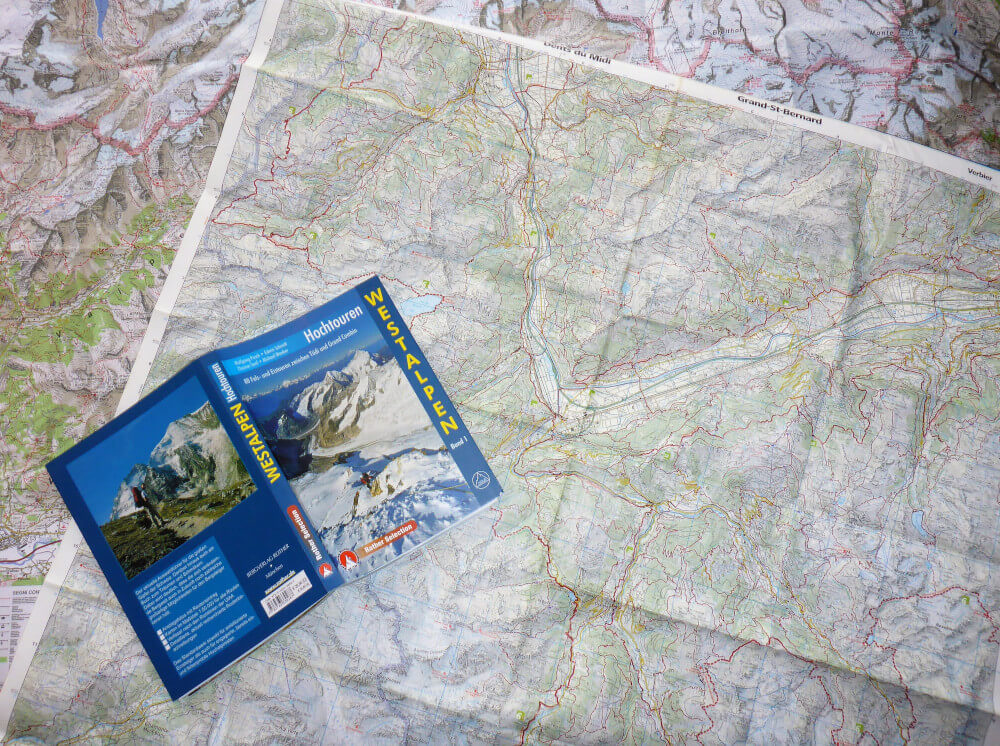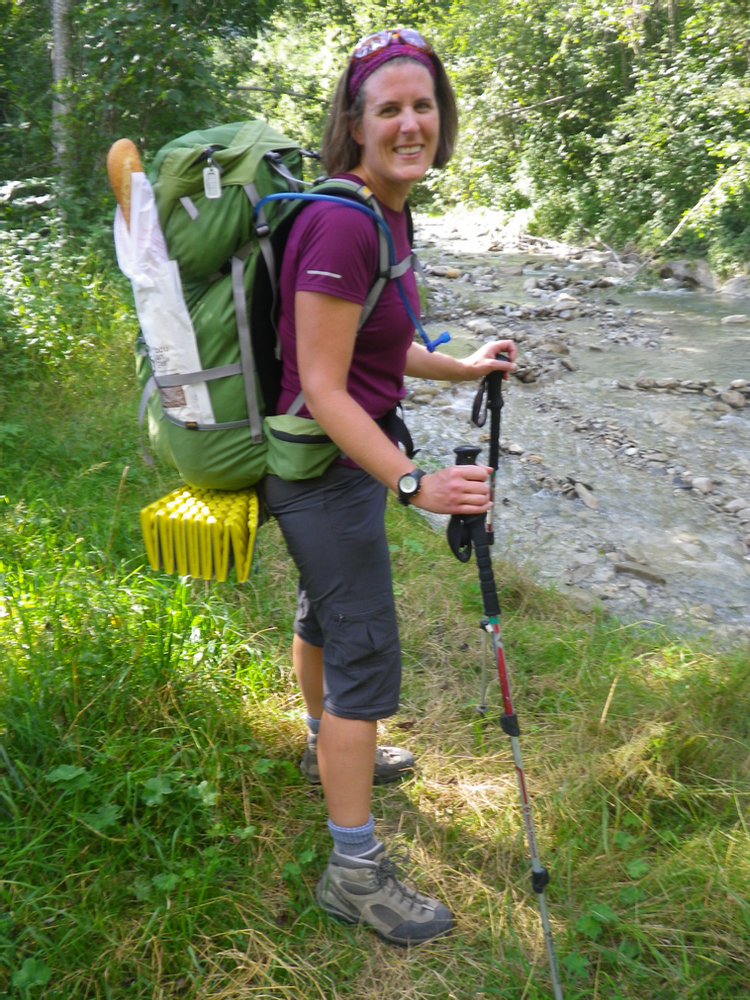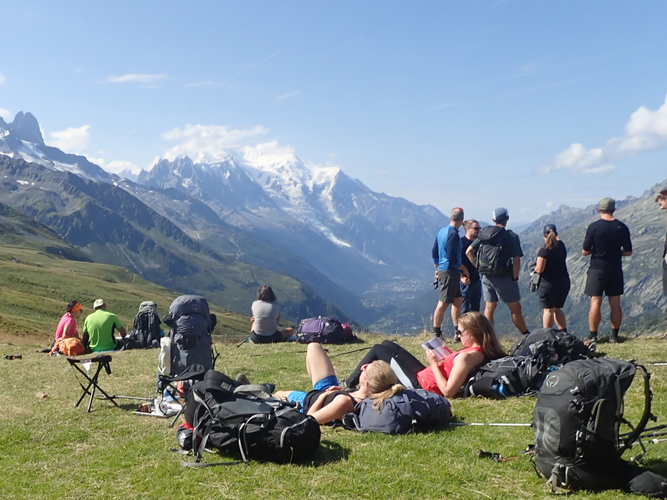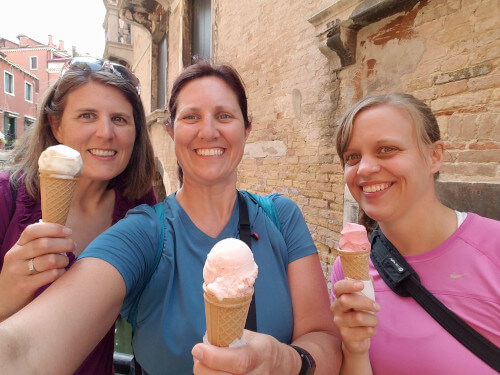Author: Lottie Mulligan – Alpenventures Adventure Planning Expert
At Alpenventures UNGUIDED, we are committed to responsible tourism and sustaining the mountain environments where we send our customers. The choices we make when planning a trip can have a significant impact on local communities, ecosystems, and the overall travel experience. From selecting a destination to gearing up, traveling, and making sustainable choices on the trail, here’s how you can plan your mountain adventure in a responsible way.


Planning Your Trip with Sustainability in Mind
A great way to plan a responsible trip is to start big—then look for the hidden gems in between. Famous places are touristy for a reason; they’re incredible! But a little research can help you uncover nearby trails, villages, and cultural sites that offer just as much beauty and a more personal experience. By stepping off the beaten path, you’ll not only enjoy a more peaceful journey, but you’ll also help distribute tourism more sustainably.
At Alpenventures, we’re here to help you find those hidden gems, but if you are planning a trip for yourself, here are a few tips:
- Use maps and blogs to pinpoint the major points of interest in that area
- Dig deeper – purchase a travel guide for your chosen area, learn about the history and the culture – new points of interest will emerge
- Contact local tourist information offices to find homestays or guesthouses—staying in locally owned accommodations keeps money in the community and offers a more authentic experience.
- Slow travel = deeper experiences – consider how you will connect the things you want to see. Instead of a car, can you take a train or a bike?
- Once you arrive, talk to people—ask them about their favourite hikes or must-see spots. You’ll be surprised by the adventures you end up on!
- Be flexible and be open – take up the offer for coffee, or follow the recommendation of your guest house owner, instead of rushing to the Instagram hotspot you had planned.
Traveling to Your Destination in a Responsible Way


How you reach your destination has a major impact on the environment, so it’s important to travel as responsibly as possible. Whenever possible, choose train travel over flying—many alpine destinations are easily accessible by train, and the journey itself can be a beautiful part of the adventure. If you must fly, avoid short-haul flights, especially within Europe, where trains or buses are often a viable alternative. This is not only more sustainable, but also a great way to experience local culture.
Public transport in the Alps is safe, reliable, and often the most efficient way to get around. For more tips on navigating transportation in the Alps, check out our Using Public Transportation in the Alps page.
Choosing Sustainable Hiking & Biking Gear
The most sustainable choice when it comes to gear, is to use what you already have. The outdoor industry, like fashion, generates significant waste and emissions, so extending the life of existing gear is the best way to minimize your impact. Before buying anything new, check your closet—you might already have everything you need. If not, consider borrowing from friends or family. A hiking backpack, waterproof jacket, or sturdy pair of boots doesn’t need to be brand new to do the job. Not only does this save money, but it also reduces demand for new production and keeps functional gear out of landfills.


If you do need extra gear, think second-hand or rental before buying new. Many outdoor stores and collectives, repair and sell high-quality used outdoor clothing and equipment. You can find lots of options Re-Action Collective website.
For those times when you must buy new, make sure you’re choosing gear that is built to last and responsibly made. Higher-quality, durable gear might cost more upfront, but it saves money in the long run by lasting for years. Look for brands with strong sustainability commitments considering the following:
- Are materials such as down and wool responsibly sourced?
- Is the product made with recycled materials?
- Does the company have any Fair Trade certifications (Look for: Bluesign, Global Organic Textile Standard (GOTS))
- Does the company support fair labour practices?
- Does the company offer repair programs or lifetime warranties, like Patagonia?
Once you have bought new gear – take care of it. Follow the instructions on the labels to ensure a long lifespan for your gear.
Reducing Your Impact on the Trail
Spending time in the mountains is an incredible experience, but it comes with the responsibility to minimize our impact. Waste disposal is a huge challenge in remote areas, and the best thing we can do as hikers is to reduce what we leave behind.
Reducing plastic waste is one of the easiest ways to tread lightly in the mountains. Carry a reusable water bottle instead of buying disposable ones, and if the water isn’t safe to drink, a lightweight filter like LifeStraw or Sawyer’s Portable Filter System makes it easy.
Many mountain huts offer picnic lunches, but instead of using disposable packaging, bring a reusable lunchbox—parks like France’s Vanoise National Park where we offer a tour, have even made this the standard, offering incredible, plastic-free meals to hikers who come prepared.
When packing your own food, ditch excess packaging and take any waste home with you. Even biodegradable peels like banana and orange skins take years to break down in the alpine environment. If it didn’t come from the mountains, it shouldn’t stay in the mountains.


Reduce Human Waste
Let’s talk about something less glamorous but just as important—where (and how) to go to the bathroom. Human waste is a massive issue in overtouristed areas, from Mont Blanc to Everest, where trails are littered with toilet paper and worse.
The best plan? Go before you leave, wait until you reach a hut, or, if nature calls mid-hike, be prepared. Pack a small shovel (you can buy lightweight hiking ones!) to dig a hole far from the trail and water sources, or better yet, carry out your waste. Toilet paper does not magically disappear in the rain—it stays there for years. Some hikers use a reusable toilet cloth to cut down on waste. And if you’re staying in a mountain hut, remember: these are not hotels. Their water and waste management systems are limited, so use resources sparingly.
Eating and Consuming Locally
What you eat and where it comes from has a big impact on your carbon footprint. Eating local is a powerful way to reduce your impact while supporting the communities you visit. Choose seasonal fruits and vegetables and seek out local farmers’ markets, bakeries, and alpine dairy farms where you can taste regional specialties while minimizing the environmental cost of imported foods.
Beyond food, responsible consumption means being mindful of the souvenirs and products you buy. Mass-produced trinkets often end up in landfills, but investing in locally crafted goods supports artisans and preserves cultural traditions. Supporting small, family-owned businesses—whether through accommodation, restaurants, or purchases—keeps money in the local economy and creates a more authentic travel experience.


At Alpenventures UNGUIDED, we’re committed to responsible tourism, which is why over 98% of the accommodations and service providers we work with are locally owned. Traveling like a local isn’t just about avoiding crowds—it’s about making choices that sustain the places we love to explore. We use our Responsible Travel Scorecard to assess each of our tours and the responsible nature of the accommodation, transportation, and the impact on the local communities.
Our top-scoring responsible tours are:
–BT3 Breweries of Bavaria Bicycle Tour
–HHT13 Hut to Hut in Switzerland Standard Itineraries (not light itineraries)
–HHT2 Culinary Delight Hut Hiking Tour (8-day and 3-day)
–HHT3 Tour des Combins
–HHT5 Tour of the Vanoise
–HHT6 Hut to Hut Light in the Austrian Alps
–VF1 Dolomites Via Ferrata Hut Experience
You can also use our explore our tours page to find the most responsible tour that suits your style!
Why Responsible Travel Matters
Planning a responsible trip isn’t just about reducing environmental impact—it’s about creating a more meaningful and immersive travel experience. By choosing sustainable transportation, supporting local businesses, using existing gear, and minimizing waste on the trail, we can ensure that the mountain landscapes we love remain pristine for generations to come.
As travellers, every choice we make has an impact. Let’s make sure it’s a positive one.
